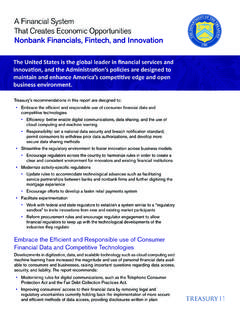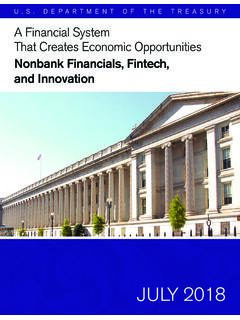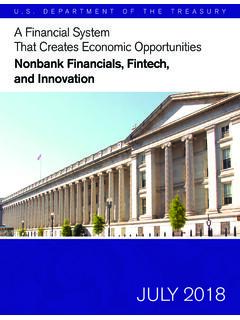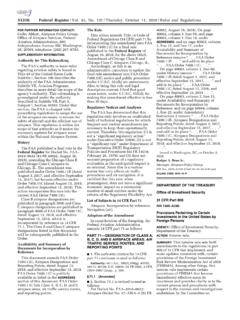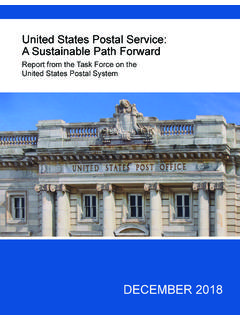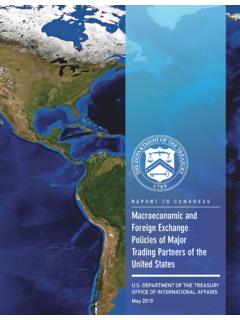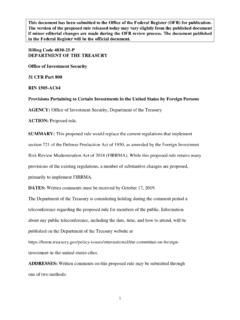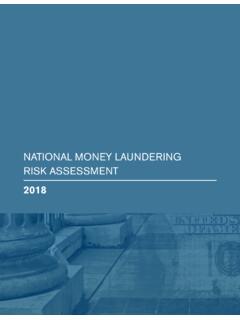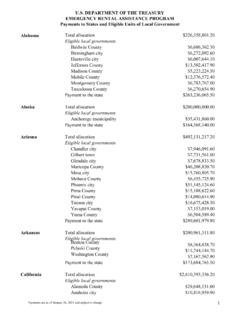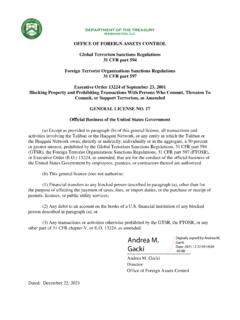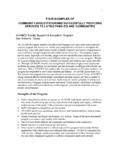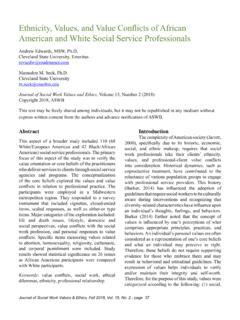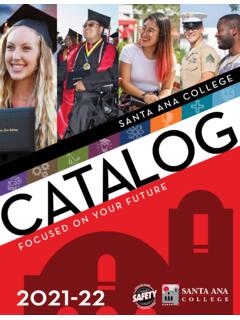Transcription of U.S. National Strategy for Financial Literacy 2020
1 Financial Literacy and Education Commission National Strategy for Financial Literacy 2020. Financial Literacy and Education Commission 2020. Members of the Financial Literacy and Education Commission Department of the Treasury (Treasury), Chair Consumer Financial Protection Bureau (CFPB), Vice Chair Department of Agriculture (USDA). Department of Education (ED). Department of Defense (DoD). Department of Health and Human Services (HHS). Department of Housing and Urban Development (HUD). Department of the Interior (DOI). Department of Labor (DOL). Department of Veterans Affairs (VA). Board of Governors of the Federal Reserve System (FRB). Commodity Futures Trading Commission (CFTC). Federal Deposit Insurance Corporation (FDIC). Federal Emergency Management Agency (FEMA). Federal Trade Commission (FTC). General Services Administration (GSA). National Credit Union Administration (NCUA). Office of the Comptroller of the Currency (OCC). Office of Personnel Management (OPM).
2 Securities and Exchange Commission (SEC). Small Business Administration (SBA). Social Security Administration (SSA). White House Domestic Policy Council (DPC). National Strategy for Financial Literacy 2020. Financial Literacy and Education Commission 2020. This page intentionally left blank National Strategy FOR Financial Literacy 2020. Table of Contents 1. Introduction 2. Defining Financial Literacy and Education 2. Role of Financial Education to Help Americans Manage Financial Aspects of COVID-19 3. National Strategy for Financial Literacy Summary 4. 2. Methods to Increase Financial Literacy and Education 7. Best Practices 7. Building Blocks for Youth Financial Capability 8. Future Steps to Improve Financial Education 8. 3. Review of Federal Activities Designed to Promote Financial Literacy .and Education and Develop a Plan to Improve Coordination .and Eliminate Overlap and Duplication 10. Structure and Function of the FLEC 11. Priority Areas of Federal Activity 12.
3 Performance and Outcome Measures 14. Accountability and Reporting 14. Allocation of Federal Resources 14. Outreach and Communications Agenda 15. Research and Learning Agenda 15. Other Considerations in Implementing the National Strategy 16. Participation by state and local governments, private, nonprofit, and public institutions in the National Strategy Role of technology 4. Conclusion 17. Appendix 1. National Strategy Process and Consultations 18. Appendix 2. Best Practices for Delivery of Financial Literacy and Education 19. Financial Literacy AND EDUCATION COMMISSION 1. National Strategy FOR Financial Literacy 2020. 1. Introduction Financial education is key to unlocking the foundations of economic opportunity and powering a strong and resilient economy. Americans must acquire Financial skills and knowledge to fully participate in our dynamic economy. Financial education is key to unlocking the foun- 15-year-olds, on average, had substantially higher dations of economic opportunity and powering Financial Literacy scores than the overall aver- a strong and resilient economy.
4 Americans must age of students in this cohort while Hispanic and acquire Financial skills and knowledge to fully par- African- american /Black students had substan- ticipate in our dynamic economy. In a 2018 study, tially lower than average only one-third of adults could answer at least four of five Financial Literacy questions on fundamen- tal concepts such as mortgages, interest rates, Defining Financial Literacy and Education Financial Literacy describes the skills, knowledge inflation and Similarly, a 2018 assessment and tools that equip people to make individual of 15-year-old students found that 16 percent Financial decisions and actions to attain their goals;. were below a proficient level of Financial Literacy , this may also be known as Financial capability, especially when paired with access to Financial 22 percent demonstrated a basic level of finan- products and services. cial Literacy , while 12 percent successfully demon- Financial education is the process by which people strated the highest level of Financial skills gain information, skills, confidence and motivation Additional performance gaps persist in Financial to act, through various means, including classroom education, one-on-one counseling and coaching, Literacy between minority populations and the technology-based interventions, and self study5.
5 Population as a whole. A key desired outcome for Financial education is For example, the same studies found that African- sustained Financial well-being, in which people can american and Hispanic adults answered fewer fully meet current and ongoing Financial obligations, can feel secure in their Financial future, and are able to Financial Literacy questions correctly than did make choices that allow enjoyment of White and asian White and asian 1. Lin, Judy T, Christopher Bumcrot, Tippy Ulicny, et al., The State of Financial Capability: The 2018 National Financial Capability Study, FINRA. Investor Education Foundation, June 2019, available at: 2. Organisation for Economic Co-operation and Development (OECD), PISA 2018 Results (Volume IV): Are Students Smart about Money? Programme for International Student Assessment, OECD Publishing, 2020, available at: 3. Terms on race and ethnicity are those used in the cited reports. White and asian adults answered on average out of 6 questions correctly, compared to and for Hispanic and African- american adults respectively.
6 Lin, Judy T, Christopher Bumcrot, Tippy Ulicny, et al., The State of Financial Capability: The 2018 National Financial Capability Study, FINRA Investor Education Foundation, June 2019, available at: 4. Terms on race and ethnicity are those used in the cited reports. Average scores were 554 for asian students, 532 for White students, 475 for Hispanic students and 446 for Black students. The overall average was 506. Department of Education. Institute of Education Sciences, National Center for Education Statistics, Highlights of PISA 2018 Results Web Report (NCES 2020-166 and 2020-072), 2020, available at 5. Department of the Treasury, Federal Financial Literacy Reform: Coordinating and Improving Financial Literacy Efforts, July 2019, (hereafter, FFLR), available at: 6. Consumer Financial Protection Bureau, Financial well-being: The goal of Financial education, January 2015, available at: https://files. 2 Financial Literacy AND EDUCATION COMMISSION. National Strategy FOR Financial Literacy 2020.
7 To address these disparities in Financial Literacy , both the private and public sectors offer additional support for minority populations to develop knowledge, skills, and confidence to make more informed Financial decisions. These offerings help people attain their goals and Financial well-being in what is an increasingly complex environment that contains competing sources of information and influence. Role of Financial Education to Help Americans Manage Financial Aspects of COVID-19. Millions of Americans have been adversely impacted by the COVID-19 pandemic and face significant Financial uncertainties as a result. On March 27, 2020, Congress passed, and President Trump signed into law, the Coronavirus Aid, Relief, and Economic Security (CARES) Act7 the largest economic relief package for workers and businesses in american history. Financial Literacy and Education Commission (FLEC) member agencies are implementing programs authorized by the CARES Act and taking additional steps to help Americans through this difficult time.
8 A clear and coordinated Strategy for Financial education supports and enhances the many critical federal efforts that are providing economic relief. FLEC agencies are empowering Americans to access and understand the variety of new Financial resources available to them in order to determine the best actions to advance their Financial well-being. The FLEC helps coordinate clear and targeted messaging to consumers and ensures that much-needed relief, resources, and benefits are made available in efficient ways to the people who need them most. When we emerge from this crisis, the coordination of efforts across agencies and between the public and private sectors will help Americans achieve greater Financial recovery and resilience. The federal government helps Americans prepare for, respond to, and recover from unexpected events such as the COVID-19 National emergency. The FLEC as the federal government's primary coordinating body on Financial Literacy and education is leading coordination among federal member agencies in providing infor- mation and guidance for consumers on timely Financial topics.
9 This National Strategy 2020 supports and enhances critical efforts during this National emergency and on the path to recovery. FLEC member agencies are working together to ensure clear information and guidance is available for all Americans, in collaboration with state, tribal, and local governments, the private sector, local service providers and community organizations. Information on Financial topics that are critical in this uncer- tain time is especially valuable for the most financially fragile Americans, including: accessing Economic Impact Payments and Unemployment Insurance benefits;. covering the costs of basic needs such as food, health care, housing, and utilities, in the face of diminished income and/or new expenses;. managing finances in the event of job loss or change, and identifying new opportunities;. understanding mortgage and housing assistance provisions;. making sound choices about health insurance;. 7. 116-136. Financial Literacy AND EDUCATION COMMISSION 3.
10 National Strategy FOR Financial Literacy 2020. understanding the availability, applicability, and coverage of federal, state, and employer provided family and medical leave and other workplace protections;. effectively managing debt during a hardship, including mortgages, credit cards, car loans, and student loans;. sustaining or successfully changing the operation of a small business, farm, or other enterprise;. starting or maintaining, if possible, insured bank or credit union accounts, such as savings accounts;. planning for the future and weathering volatility in long-term savings and investments, such as retirement savings;. avoiding frauds and scams, and reporting them when they occur; and effectively making charitable contributions. National Strategy for Financial Literacy Summary The FLEC was created by statute in 2003 to improve the Financial Literacy and education of persons in the United States. 8 The FLEC is comprised of 23 federal government entities reflecting a wide array of functions, and is chaired by the Secretary of the Treasury with the Director of the Consumer Financial Protection Bureau serving as Vice-Chair.
